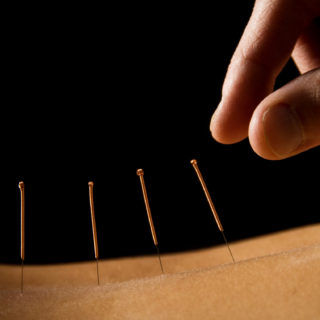Study: Acupressure Helps Shortness of Breath
Acupressure significantly improved Dyspnoea – shortness of breath – in patients with chronic obstructive pulmonary disease, according to a recent study.
“Effectiveness of acupressure in improving dyspnoea in chronic obstructive pulmonary disease” was conducted by staff at the Jen Teh Junior College of Medicine, Nursing and Management, in Miaoli, Taiwan; the Institute of Health and Welfare Policy and the Institute of Clinical Nursing at National Yang-Ming University, in Taipei, Taiwan; and the Institute of Chinese Medical Science at Chinese Medical College, in Taichung, Taiwan.
The study involved 44 subjects with chronic obstructive pulmonary disease. Subjects’ average age was 73, and most of them were men.
The participants were randomly assigned to either a true-acupressure group or a sham-acupressure group. Both groups had five sessions of acupressure per week, 16 minutes per session, for four weeks, for a total of 20 sessions.
In the true-acupressure group, the acupressure protocol involved the following acupoints: Great Hammer (GV14), Celestial Chimney (CV22), Lung Transport (B13), Kidney Transport (B23) and Fish Border (L10).
In the sham-acupressure group, the acupressure protocol involved the following acupoints, which are used to promote intestinal movement: Shang Hill (Sp5), Supreme White (Sp3) and Large Pile (Liv1).
Activity, fatigue and dyspnoea were rated at the beginning and end of the study using the Pulmonary Function Status and Dyspnoea Questionnaire-Modified (PFSDQ-M). Subjects also rated their levels of anxiety associated with dyspnoea using the State Anxiety Inventory at the start and finish of the study, and took a six-minute walking distance test as well, to evaluate tolerance of activity.
Oxygen saturation in the finger of each participant was measured before and after each acupressure session using a pulse oximeter.
Mean scores on the PFSDQ-M showed that dyspnoea in the true-acupressure group decreased significantly after the intervention and that fatigue levels for this group improved significantly, as compared to the sham-acupressure group.
Results of the State Anxiety Inventory showed that, on average, anxiety was significantly lower in the true-acupressure group than the sham group at the conclusion of the study.
Subjects in the true-acupressure group also improved significantly on the six-minute walking test, indicating that they had more tolerance for activity than the sham group.
Mean oxygen-saturation scores for the true-acupressure group were significantly greater than the sham group following each acupressure session, which suggests improved pulmonary function.
“We found significantly greater improvements in patients receiving acupressure at true acupoints compared with those receiving acupressure at sham points,” state the study’s authors. “This improvement related to all the variables studied and suggests that people with [chronic obstructive pulmonary disease] would benefit from acupressure at true acupoints.”
– Source: Jen Teh Junior College of Medicine, Nursing and Management, in Miaoli, Taiwan; Institute of Health and Welfare Policy, Institute of Clinical Nursing at National Yang-Ming University, in Taipei, Taiwan; Institute of Chinese Medical Science at Chinese Medical College, in Taichung, Taiwan. Authors: Hua Shan Wu, R.N.; Shiao-Chi Wu, Ph.D.; Juang-Geng Lin, Ph.D.; and Li-Chan Lin, Ph.D., R.N. Originally published in the Journal of Advanced Nursing, 2004, Vol. 45, No. 3, pp. 252-259.


















No Comments
Be the first to start a conversation